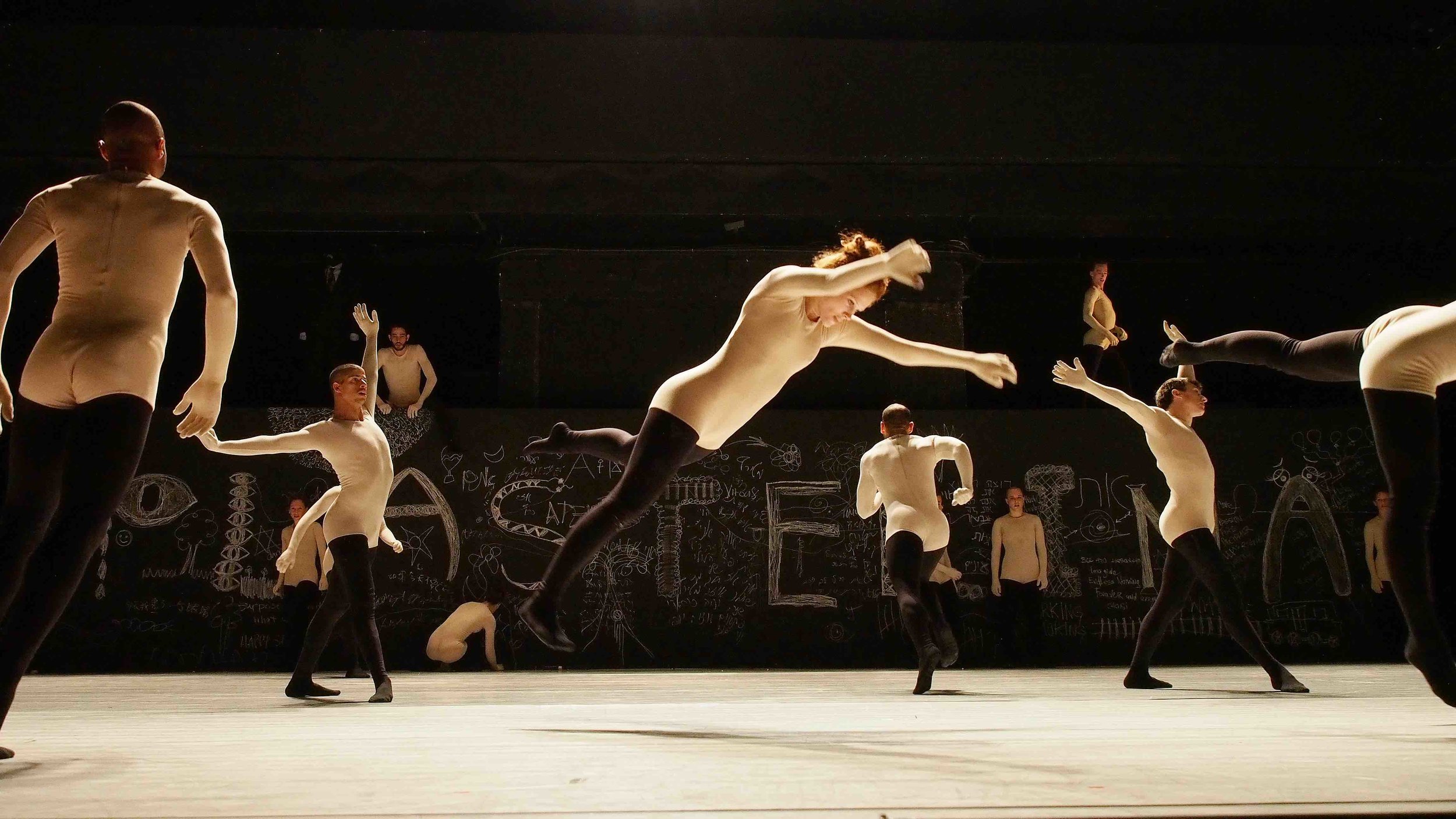Gaga dancers with Ohad Naharin. Photo by Gadi Dagon, courtesy Batsheva Dance Company
Gaga is not a dance technique but a way of life, according to choreographer Ohad Naharin. His mission, he says, “even more than giving [Gaga] to dancers, is to give it to people. You don’t have to have an ambition to be onstage. You don’t have to have dance training. It’s about finding a connection between effort and pleasure, and places of atrophy, groove, the ability to laugh at oneself, the scope of sensations. Isolation. Recognizing flesh, bones. Movement patterns. Enjoying it!”
“Gaga is about finding a connection between effort and pleasure, and places of atrophy, groove, the ability to laugh at oneself.”
Suzanne Dellal Centre for Dance and Theatre offers Gaga classes for nonprofessionals—studios filled with men and women of all shapes, sizes, and ages. Before the session starts, some of them limber up impressively, stretching or balancing yogically; others move more gingerly, simply attuning themselves. There are no mirrors on the walls. (“Not allowed,” Naharin explains. “Actually, dancers without mirrors learn much more about the form, and they become much more efficient about the movement than people who work with mirrors.”) One of the Gaga mandates is “Listen to the body”: be aware of sensations and abilities and limitations. “Go to places where the pleasure in movement is awakened.”
Teachers lead sessions with calm energy. Participants follow the gentle instructions: Float around in your skin . . . then remove the skin to feel the bones . . . then put the flesh back on until you are very “juicy” . . . fill yourselves with more and more juice until you are completely swollen with it . . . now squeeze yourselves out until you are rags on bones. Use the “traveling silliness” in your bodies to dance, just a little. It might feel something like real grace.
“It is a lot about yielding,” Naharin explains. “A lot about the idea of the advantage of letting go, which can actually make you more available and more sensual, more dangerous, more animal . . . more ready to snap.”




